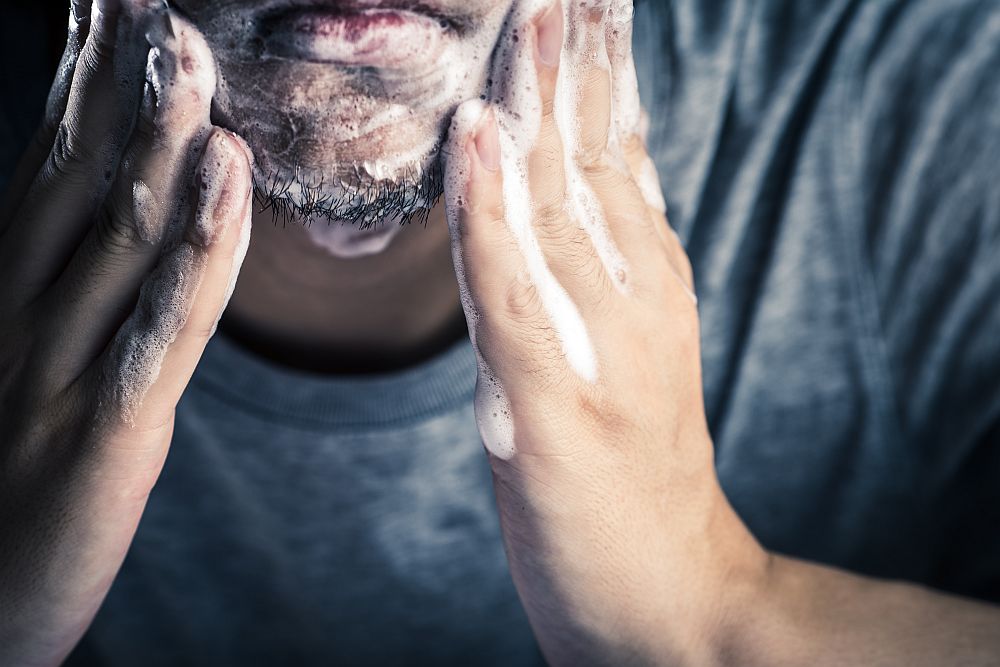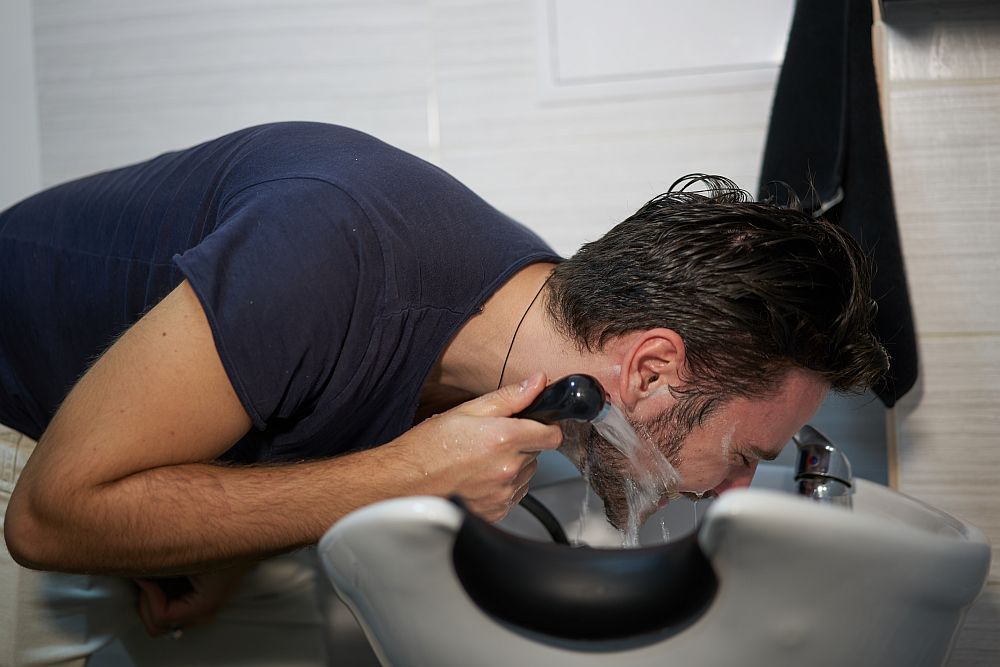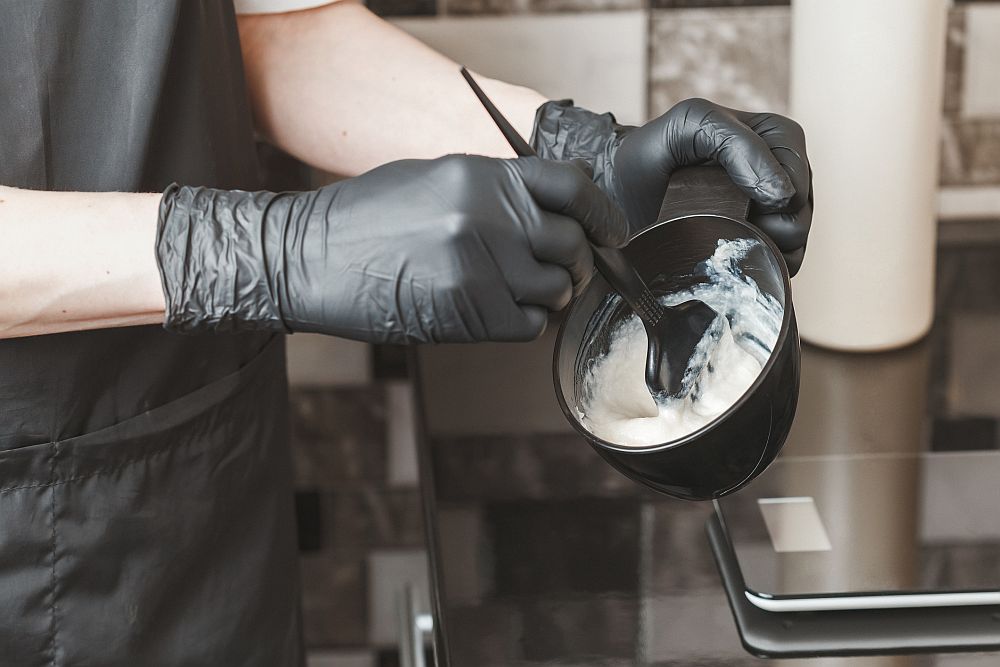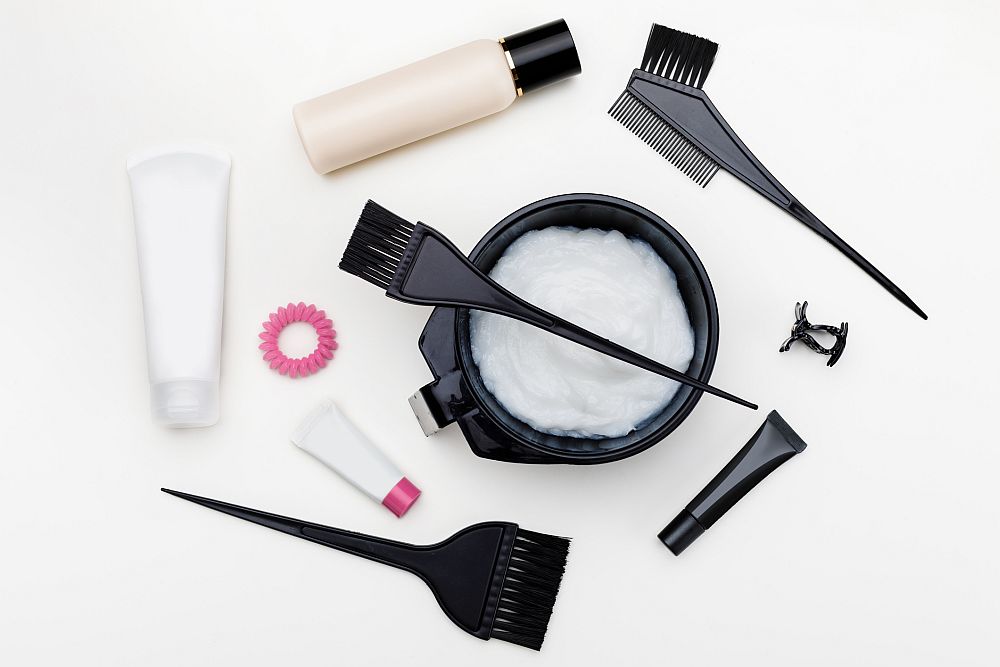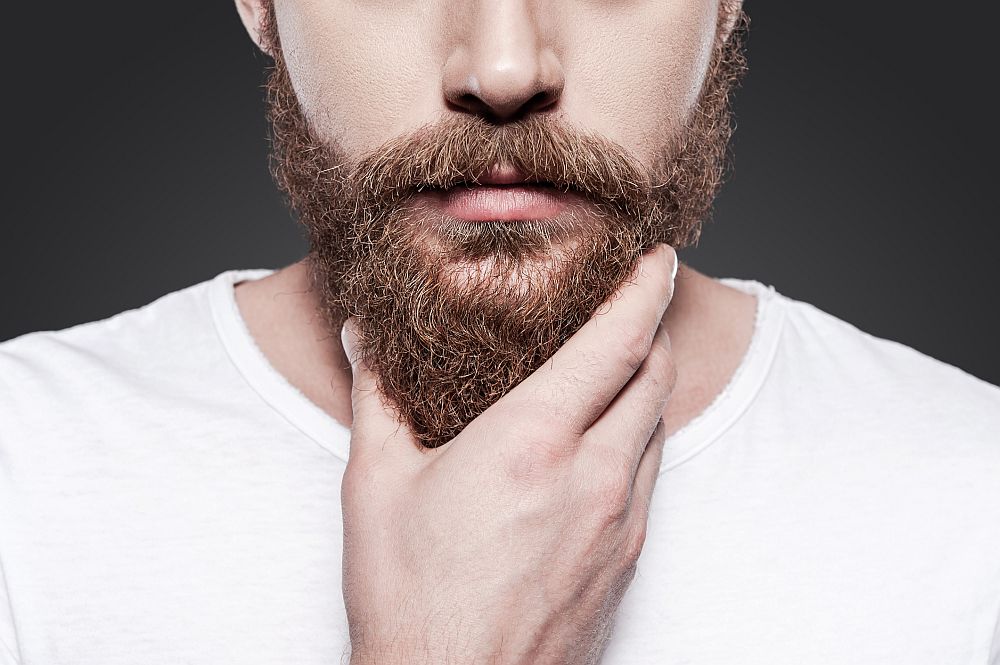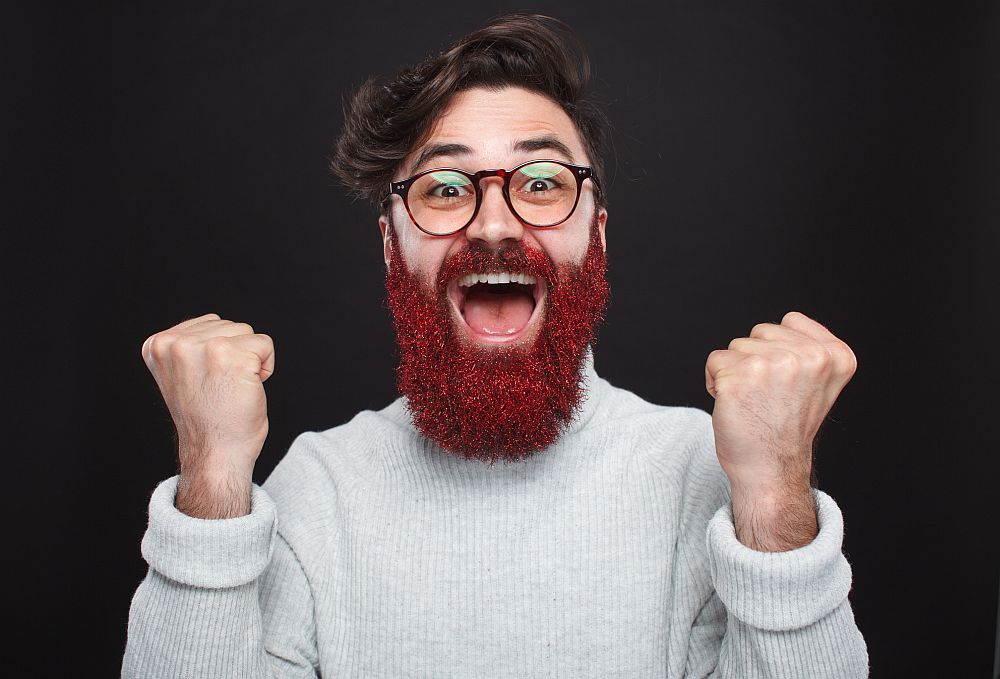First, not all men are eager to embrace the gray hair look just yet. A number will resort to dyeing hair and beard at the slightest hint of grey. Others simply color their beard to flash a unique trendy look and earn some fashion points. A stylish streak of color in the mane might be all the change they’re looking for. But for the most part, men dye their beards to conceal emerging grey beard hair that comes with age. Whatever the motivation for dyeing a beard, you’ll need to consider a few factors for a desirable natural look. We’ll look at everything you need to know to effectively dye your beard.
Why Should I Dye My Beard?
We’ve already mentioned a few reasons why you may want to dye your beard. In summary, these are the main reasons men would want to dye their beards.
Not Ready for the Salt and Pepper Look
Some people aren’t so comfortable with the idea of silvery strands prominently speckled in their manes. It can be an unwelcome statement that you’re aging. That alone can take away a pinch of confidence from some people. Though not a permanent solution, applying beard dye is a convenient fix.
Consistency
Gray hairs will mostly appear first in the hairs on the head before they show up on facial hair. Many people who dye hair to camouflage the emerging grey strands are also likely to dye the beards. That’s usually done for consistent coloring of the hair and beard.
It’s an Emerging Trend
Some folks dye their beard to embrace what’s trending on the urban fashion scene. It’s becoming trendy to see guys color their mane in dazzling hues such as pink, green, purple, or blue. If you’re up to the challenge why not try it out? It’s a sure stunner.
Preference for a Different Color or a New Look
Some merely prefer a different color of a beard than their own. For others, it’s the adventure of wearing a new look. It may come from a new haircut, an unusual dress theme, or dyeing your beard. Stepping out with a fresh look can be a serious confidence booster worth the effort.
Matching Beard to Hair Color
At times genetics can strap us with a beard that’s not a perfect color match with the hair on our heads. For instance, you may have a red beard with brown hair. Most people will be fine with it and won’t bother trying “to correct” nature. In many cases, many people don’t even notice the disparity in their hair colors. But some will relentlessly pursue perfectly coordinated hair and beard colors by coloring the beard. It’s reasonable if that’s what it takes for an added boost of confidence and a more cohesive look.
For Job Interviews
Interviewers may consciously or unconsciously exercise bias towards younger-looking applicants. That’s particularly for jobs that require one to be physically energetic, or for organizations keen on portraying a youthful look. To better your chances of acing your job interview, you may need to spruce up the grey hairs with dye.
What to Consider Before Dyeing Your Beard
Coloring your beard is a simple fix to getting rid of grey hair follicles. However, before you can go full throttle, you need to understand what you’re getting yourself into. Firstly, to dye your beard, you’ll want a process that is safe healthwise. Some hair dyes may contain chemicals that can pose danger to your mane. That could result in a brittle beard or irritated skin. So tread with caution. Carefully consider the color selection, type of dye, and application technique. Natural hair has interesting tonal variations in its coloration that may not be achieved by dyeing your beard. Coloring your hair will give it a uniform coloration that can tend to be boringly blunt. Nonetheless, carefully selecting the dye colors to use can help you realize impressive results. You’ll also have to decide whether you’ll do it yourself, or engage professionals. Besides, you don’t want to end up with a poorly executed beard dye.
Choosing the Right Color and Shade For Your Beard
Choosing the correct dye color and shade for your beard is the most fundamental part of dyeing your beard. Failing to select an appropriate dye color that matches your beard and hair shades may leave you with an unnatural look. Besides the dye color, the dye type also plays a critical role in the outcome of your beard dye. That’s mainly because facial hair strands are more coarse and tougher compared with other hair. It’s this drier and rougher nature of facial hairs that makes them less absorbent to dyes so the tints will be somewhat muted. Therefore, if you want to be sure of a sleek natural look after dyeing your beard, consult your hairstylist. By and large, to avoid ending up with a beard that’s extremely dark go for a dye of a slightly lighter shade than your beard.
Some Pointers for Dyeing Your Beard
Use a dark brownish dye if you have jet black hair to avoid your skin appearing pale. Stark black often offers unnatural contrast with many skin types.Avoid extremely dark shades if your facial hair is blond or white as once again the contrast with the rest of your hair may be jarring.For the round-faced, you’d want anything that makes your face appear thinner. Dark brownish and black dyes will do exactly that by forming a shadow line on your face.Pale skin will more naturally flow with brownish or red shades as they will not exaggerate the white tones of your features. Instead, they’ll give them a more natural background color.It’s easy to add more dye for darker colors, a bit more difficult to go the other way. Go conservative, and ease your way up to the right shade.
Matching Beard Dye to Natural Hair Color
Go for tones that complement your natural features for the best results. That would mean preferring beard dyes that closely resemble your hair’s natural color. As a prudent measure, consult a professional stylist before you decide to dye your beard in bolder, more dynamic shades to ensure they coordinate well. Try to apply a dye that’ll be as subtle as possible. Wherever in a dilemma, err to the side of a lighter shade of beard dye as it can be darkened with an additional application.
Gray Hair Density and Dye Application Method
The extent of grey hair determines whether you’ll proceed with a full dye application or just a touch-up. Go for a complete beard dye application if the density of beard that’s turned gray is less than 50%. Where the gray density exceeds 50% consider the touch-up beard approach which is gradual. It’ll result in what has all the hallmarks of a natural, cool salt-and-pepper look.
How to Prepare Before Dyeing Your Beard
Dyeing your beard begins with preparation to ensure pleasant results. Here’s what you need to do to prepare to dye your beard.
Grow Your Beard at Least an Inch Long
Facial hair grows faster than the hair on your head. If your beard is too short and scanty it will not take up dye properly. More to that, you’ll have to re-dye your hair shortly after as the roots start to show.
Select a Matching Dye
As already outlined, choose a color that’s closest to your natural hair color, or which at least complements it.
Do an Allergy Test
Beard dyes, including those derived from natural sources, contain chemicals that may cause allergic reactions to different users. Apply a little bit of the dye you intend to use to an area of your skin, like on your wrist. If nothing happens at first, keep it on overnight so that there’s sufficient time for any allergic reaction to occur. Irritation on the spot may indicate an allergy. Otherwise, if safe, proceed to full application. If you have any doubts, always consult your physician.
Wash, Rinse, and Dry Your Beard
Wash and rinse your beard carefully, then dry it. Use an appropriate beard shampoo to nourish the scalp and remove dead skin underneath your beards. Rinse out the shampoo thoroughly so that it doesn’t impede the absorption of the dye by the beard strands. Cleaning the beard well enhances its ability to retain the dye for longer.
Style Your Beard
Trim your beard to your preferred style with a good beard trimmer. Explore these beard styling options and see which one you’ll like.
Have the Necessary Paraphernalia for the Job
These will include;
Latex Gloves – Keeps your hands from dye stains. Usually provided within the dye kit.Disposable Handkerchiefs – Useful when you need to wipe your hands or surfaces.An Old Towel – To cover tabletops from being stained by the dye.An Old T-shirt – This conveniently takes in dye stains that would have otherwise landed on you or other clothes.
Pro-tip: Avoid dyeing your beard just before critical events such as a media appearance, job interviews, or a wedding. Despite all the preparations, sometimes dyeing your beard may not go as planned. Dye your beard at least a week before the crucial event just in case you’ll need to make adjustments.
A Step-by-Step Guide to Dyeing Your Beard
You’re now ready to dye your beard. You can do it yourself or have a professional do it for you.
1. Carefully Mix Your Beard Dye
Wear the latex gloves and the old t-shirt before you begin mixing the beard dye. This keeps you safe from the chemicals and also prevents staining on your good clothes. Follow the specific instructions while using a brush to mix up the dye.
2. Apply the Dye to Your Beard
Remember to apply petroleum jelly on the margins of your beard before you start applying the dye. This creates a barrier that stops staining. Apply the beard dye using a brush to your dry beards with up-and-down strokes. Ensure the dye goes deep into the beard without reaching the skin. Make sure the dye is evenly distributed and every part of your beard has received dye.
3. Let the Dye Settle Until Beard Reaches the Desired Color
Follow the instructions on your dye on the amount of time required for the dye to dry. Let the dye soak in till the required color tone is achieved. You can test the depth of color on the beards by rubbing off the dye from a small potion. Check to see if the resulting color depth is what you wanted. A darker shade is achieved if the dye is left to remain for a longer period of time. Should you need a darker shade, reapply the dye.
4. Wash the Extra Dye off Your Beard
With your gloves still on, wash off the excess dye with running water. Rinse thoroughly until the water turns clear. The beard will initially have bold, vibrant, even unnatural colors while the hair is wet. That’s normal. Once dry, and as time goes by, the color tone will fade into a more natural look.
5. Apply Shampoo
Right away shampoo your beard then rinse it out. You can lighten the tone of your beard by running more water through it or showering.
Maintaining Your Beard After Dyeing
Beard maintenance is the next important step after dyeing. After all, you want it to continue looking great after you’ve gone to the trouble of dyeing it.
Combing
Maintain the beard as you normally do by combing it regularly to ensure it grows well.
Handle Your Beard Gently When You Shower
Rough handling rubs off the dye from your beard. Minimize friction by letting lukewarm water gently flow through the beard as you comb it lightly. Your beard dye will be more susceptible to fading if you use hot water. Simply rinsing the beard will suffice to keep it clean and maintain its newly-dyed colors.
Invest in Color Protecting Formulae
There are lotions, hair conditioners, and shampoos that have been custom-made for color-treated hair (and beard of course). Use these products to maintain the color of your beard and extend the lifespan of the dye. Limit your shampooing to at least once or twice a week.
Retouch Your Beard From Time to Time
Reapply the dye to your beard periodically when it shows signs of fading. Retouching your beard regularly will give it a full, fresh, and invigorated look. Retouch your beard at least monthly to keep the desired shades. Besides fading, beards grow pretty fast hence the need to retouch the roots even more frequently.
Should I Dye My Beard All at Once or Progressively?
This will depend on whether you want to witness an immediate, definite change or a gradual transformation. The majority of those who dye their beard opt for the full application of the dye and get instantaneous results. If you know the exact resultant color you’d want, go for the option of full coloring. Within a couple of minutes, you’ll have your new look. Those who prefer a personalized and fine-tuned appearance would go for the gradual transformation. The process uses comb-in beard dyes and beard dye shampoos that darken the beard with constant use. They result in a polished, customized finish with a distinctive natural appearance.
Can I Dye My Beard by Myself at Home?
If you’ve had your beard dyed before or have experience dyeing hair, go for it. If it’s your first time, consider going to a salon. Here are a few reasons you might consider dropping some cash on a professional dye job:
Professionals will be able to get the correct mix of colors that match your inherent beard shade. Although most men use a black dye to cover up the traces of grey strands in the beard, picking the most appropriate dye shade can be difficult. Next, a professional can match your type of beard with the best type of dye to use.Lastly, you’ll spare yourself a lot of mess in the process if you indulge professionals for the job. Professionals have the experience and tools that will make dyeing your beards less of a mess. Otherwise, you might end up ruining your attire and bathroom.
As you engage professionals and make observations, you can finally decide to do it yourself at home. There are plenty of YouTube videos to supplement the input of professionals as you dye your beard by yourself at home.
Can I Go Swimming After I Dye My Hair?
After dyeing your beard it could easily fade off if you go swimming. That’s because the chemicals in the swimming pool can potentially strip the dye from your facial hair. Worse still, the dye may react with chemicals in the pool and that could lead to discoloration of the beard, untimely fading, or hair breakage. Give the dye at least a week to settle before you can go swimming. Keep clean by gently rinsing your beard.
Final Thoughts on Dyeing Your Beard
There are many reasons why men would like to dye their beards. Concealing the glaring evidence of aging visible in the silvery strands in the beard is one of the main reasons. Others take to coloring the hair as a fashionable trend, as some want to match the color of their hair to the beard. We’ve woven through what you need to do before, during, and after dyeing your beard. Have you dyed your beard? We would be glad to know why you opted to dye your beard and how the experience was. Do not hesitate to share it all with us in our comments section below.

